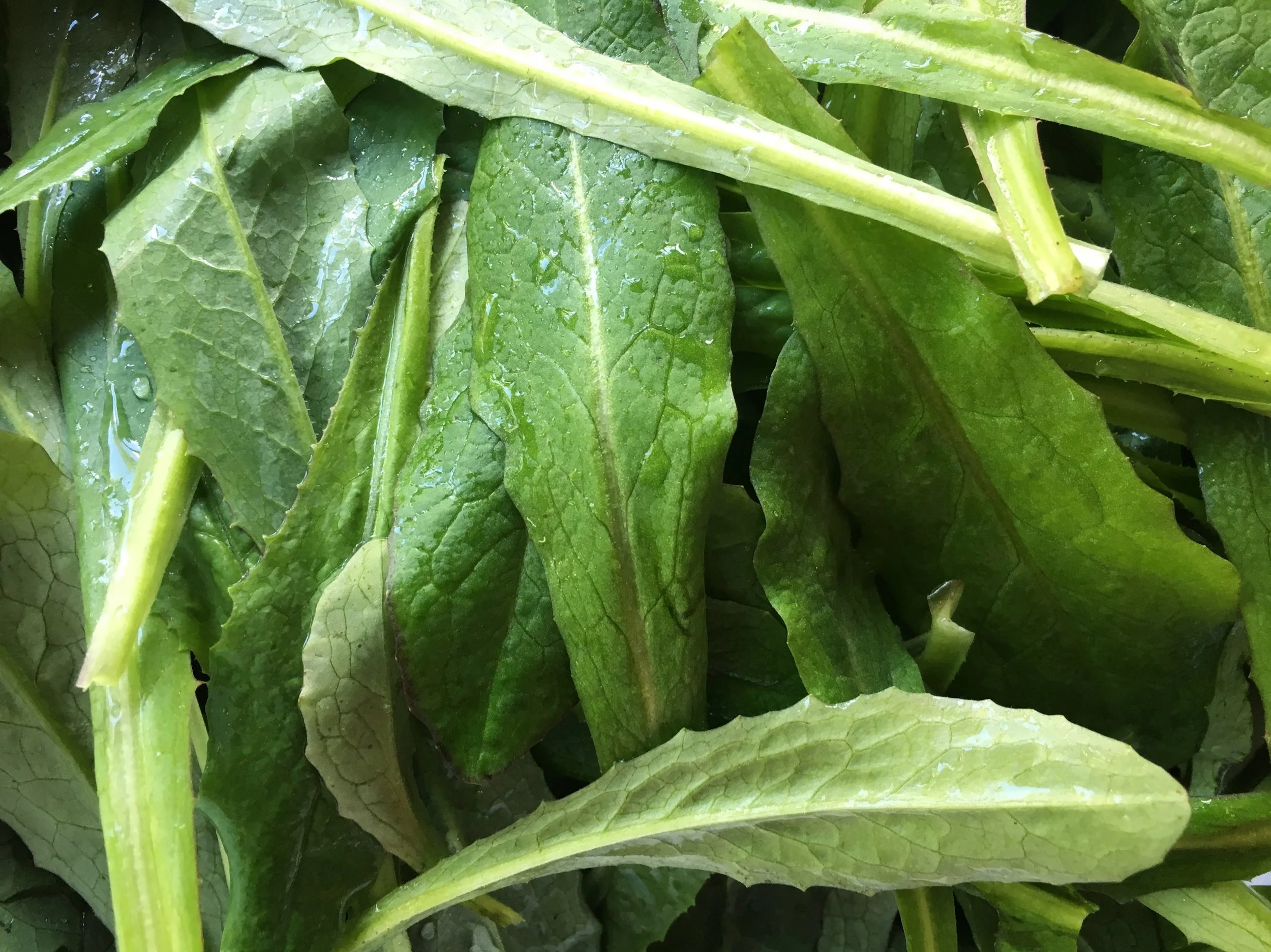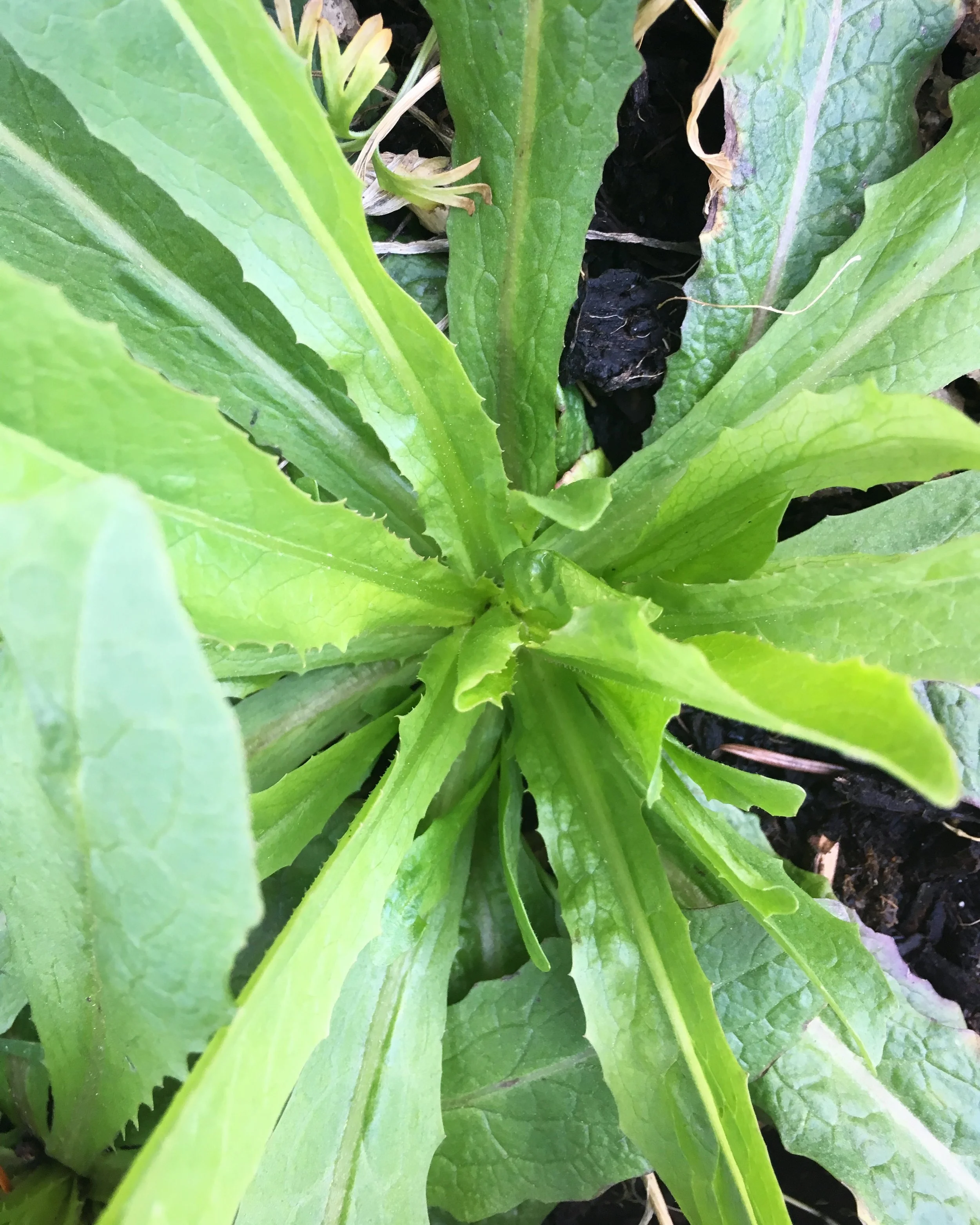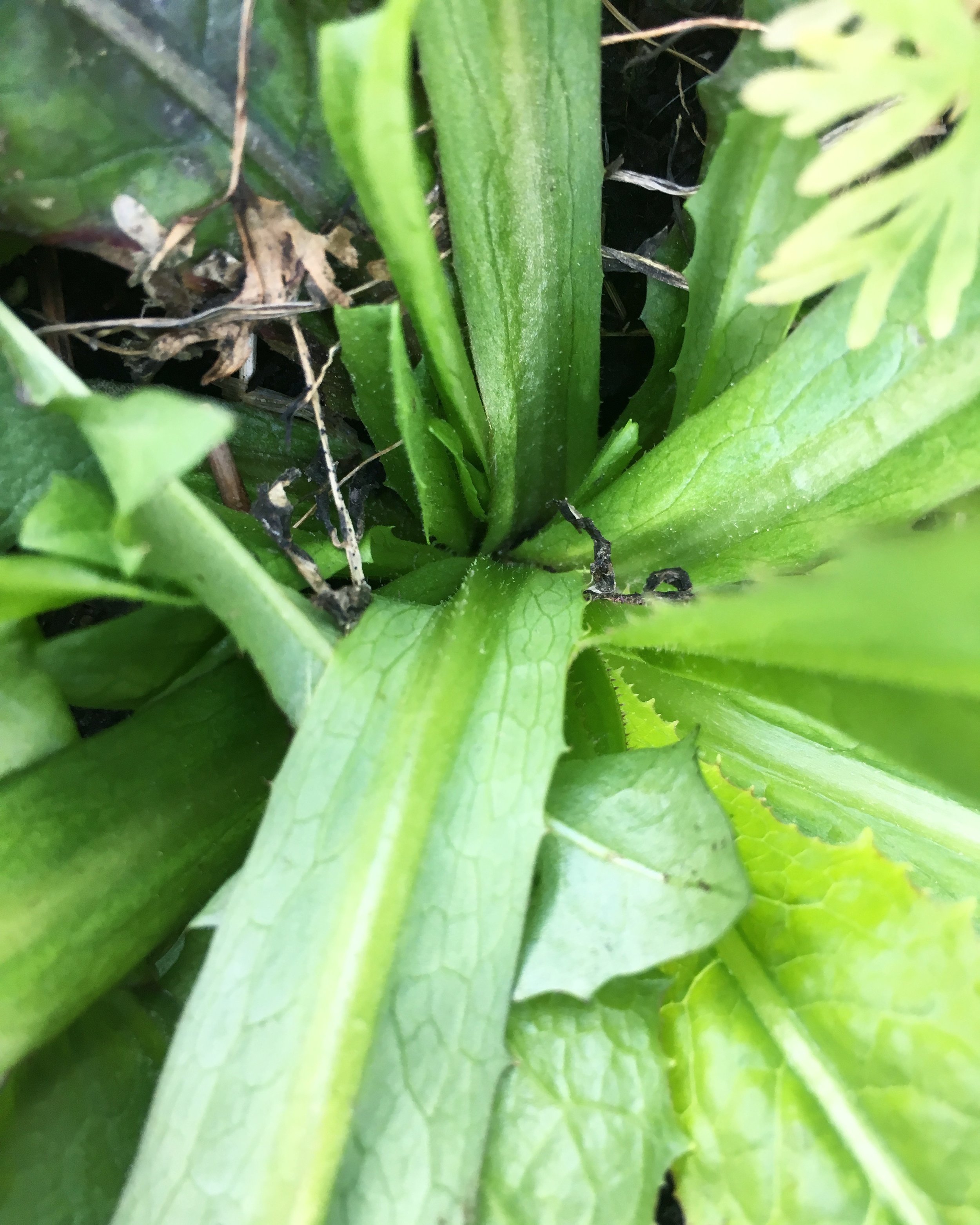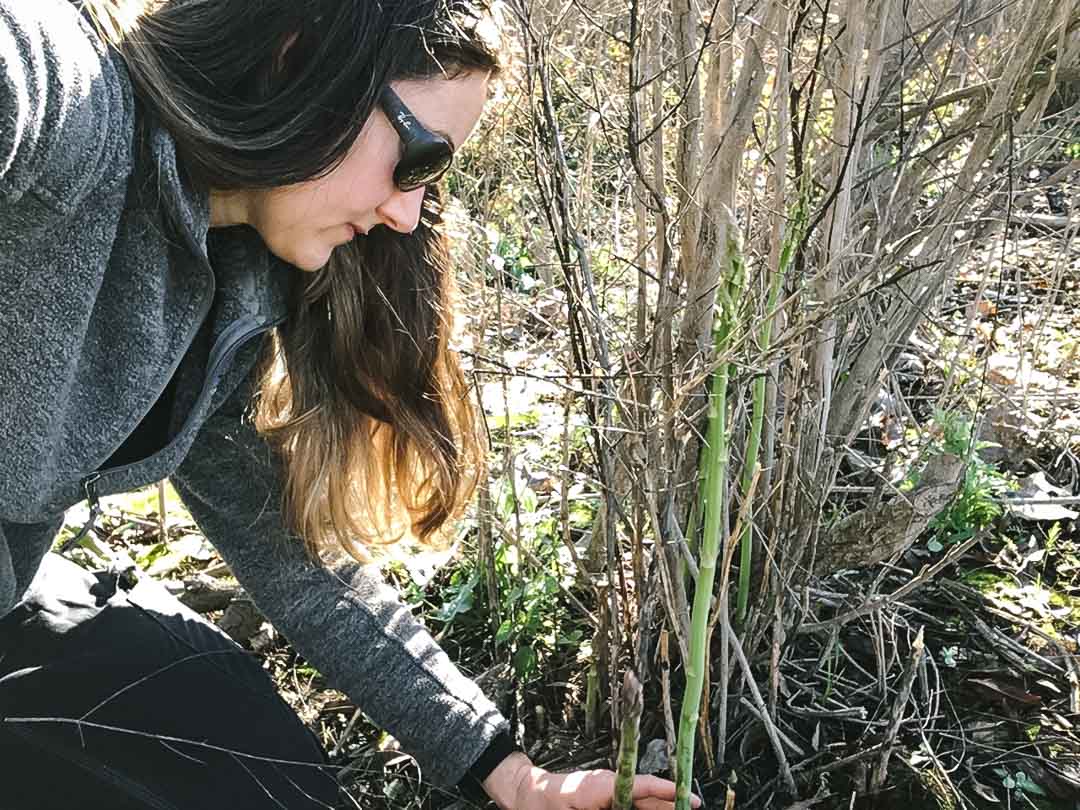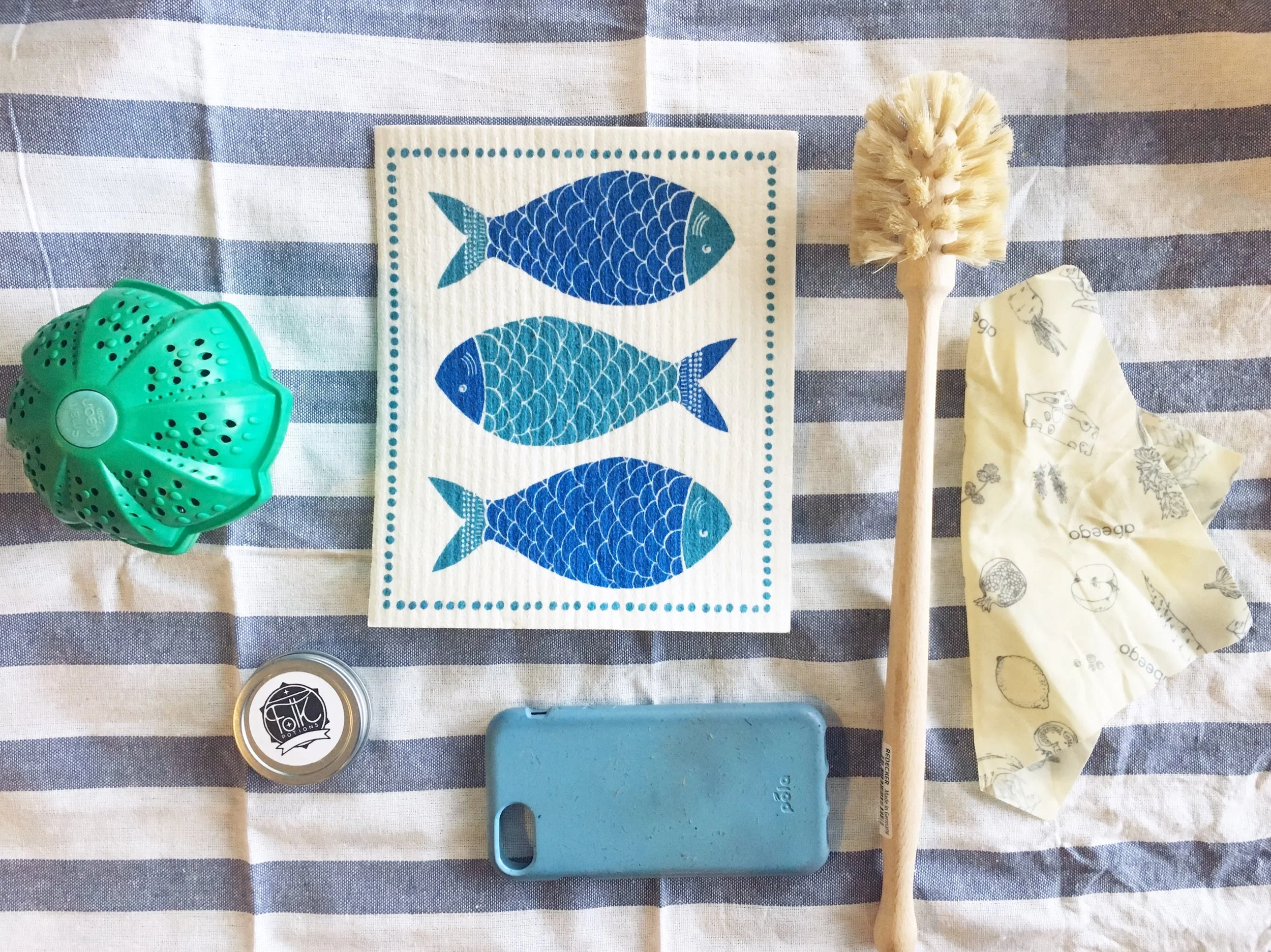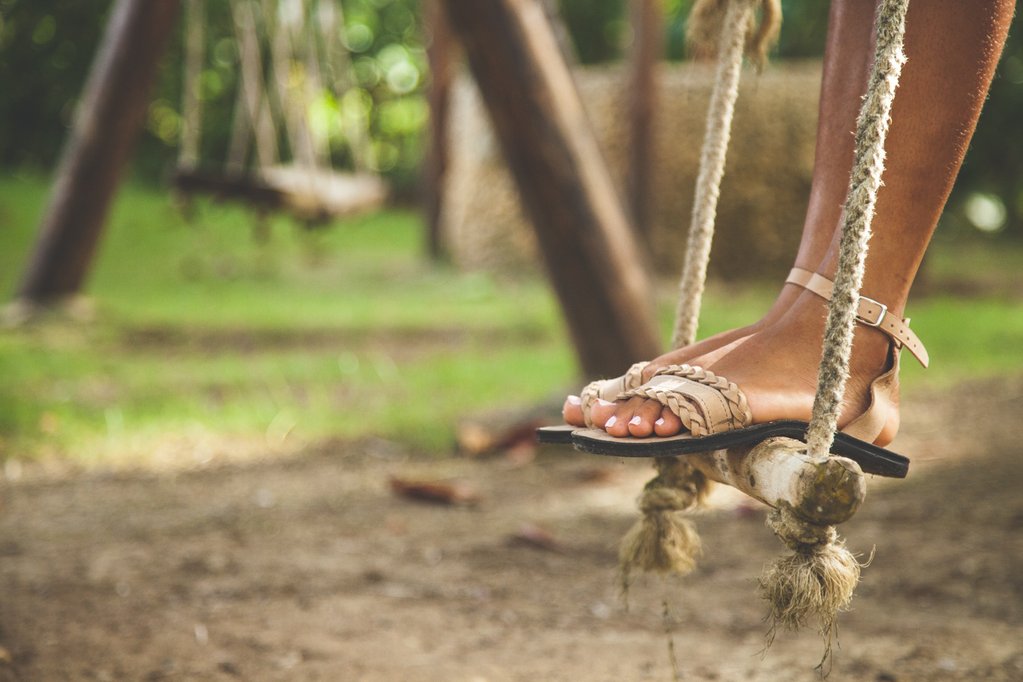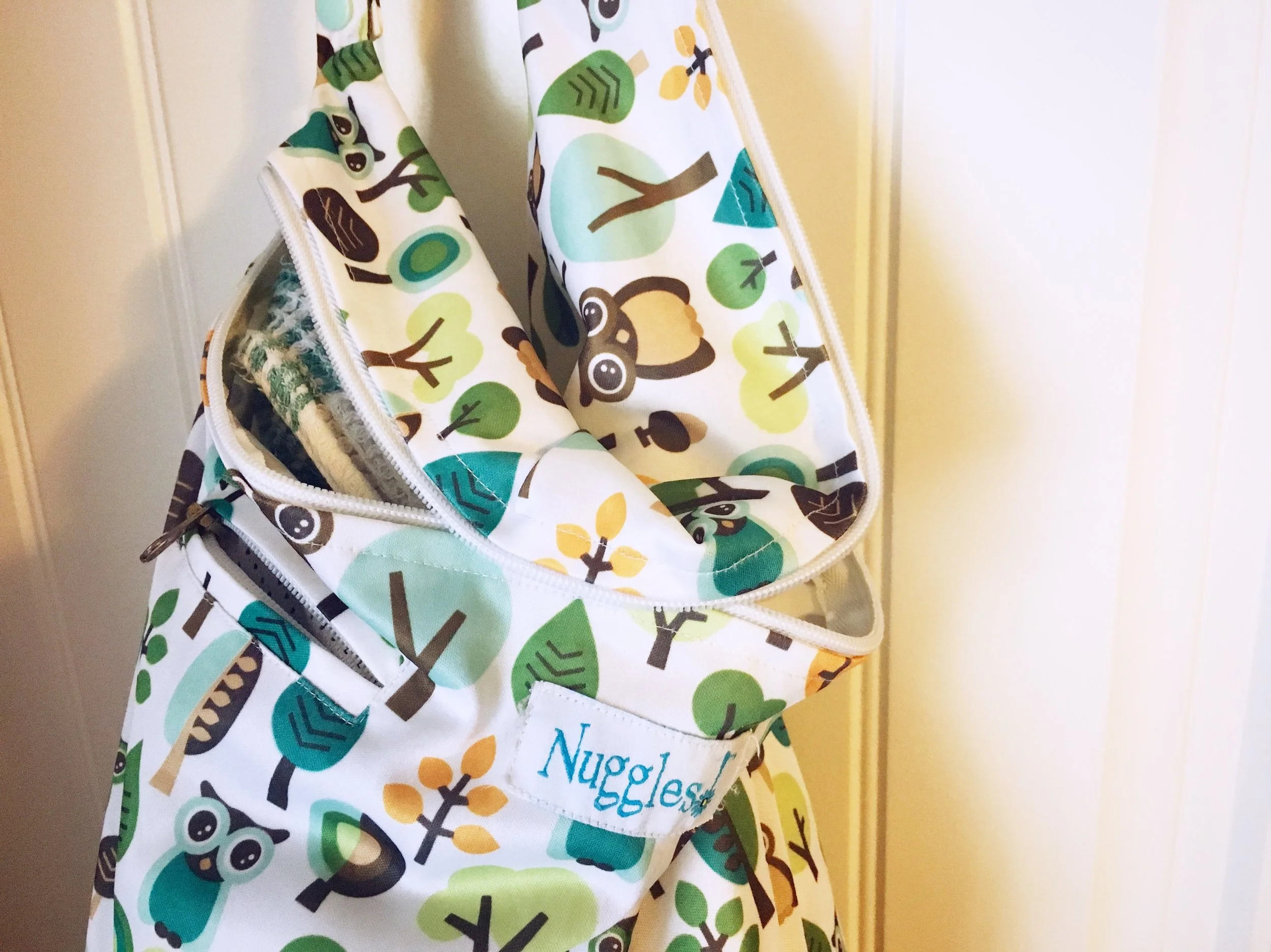Wild Lettuce Soup
Wild lettuce is something I've been foraging this year that's new to me. I noticed a whole bunch of it popping up last year, but only recognized what it was when it was about three feet tall, flowering, and too bitter to imagine eating. This spring when the snow finally melted, I noticed several of these little rosettes, and it occurred to me that the leaves looked almost like skinny lettuce. I threw a few photos up on one of the amazingly helpful Plant Identification groups on Facebook, and did a bit of googling, and realized that their resemblance to lettuce was because they were! The following hints about how to identify wild lettuce are not comprehensive enough to guarantee what you've found. Before eating any wild plant please do your research and make sure you know what you are eating. There's no good reason to risk eating something that you are not 100% sure of.
This wild member of the lactuca family is the ancestor of the lettuce you see in the grocery store. You want to make sure you harvest it young, because otherwise it becomes too bitter. Look for lush leaves coming up in a rosette, with somewhat wavy and possibly even slightly prickly edges. The midrib of each leaf should have some prickles forming on the back. One of the most telltale signs is a milky sap when you break off a leaf.
Milky sap is usually an indicator that the plant is something you shouldn't be eating, but notable exceptions include wild lettuce, and also the dandelion. These bitter spring greens are the perfect thing to eat after a winter of rich and heavy food. I think that is one of the beautiful things about seasonal eating.
Wild lettuce is, in fact, very bitter. It goes even beyond most kales I've eaten, and some people will have a very hard time eating it. While you could include it in your spring salad mix, I find it more palatable cooked. The soup below was a really nice way to eat these greens, and the bitterness balanced out the richness of the other ingredients beautifully. If you still find them too bitter try leaving it to eat until the next day. When I ate the leftovers I found the flavour had completely mellowed and was even more delicious.
Wild Lettuce and Bacon Soup
If you still like the look of this recipe but can't find any wild lettuce, swap it out for kale or another strong and bitter green that you have on hand.
- One large onion
- Two cloves garlic
- 5 - 6 slices bacon
- 4 - 5 Yukon gold potatoes
- 2 - 3 cups wild lettuce
- 2 tbsp butter
- 2 cups milk
- Rosemary
- Basil
- Paprika
- Red Pepper Flakes
- Salt
- 1 tbsp lemon Juice
- Melt the butter in the bottom of your pot, and as it heats mince the onion. Sauté until translucent. Mince the garlic and add.
- Add the bacon and cook until crispy.
- While the bacon is cooking, chop the potatoes into small, bite sized pieces. Add them into the pot and sauté briefly.
- Cover everything with water and simmer until the potatoes are cooked.
- Pour in milk, and add spices in the amounts that you like. Bring back to temperature, and chop the wild lettuce. Throw it in and put the lid on for a few minutes. Once the greens are steamed slightly stir them in.
- When the lettuce is just wilted add the lemon juice and taste to see if you need to adjust your spices. When you are happy with everything it is ready to enjoy!
